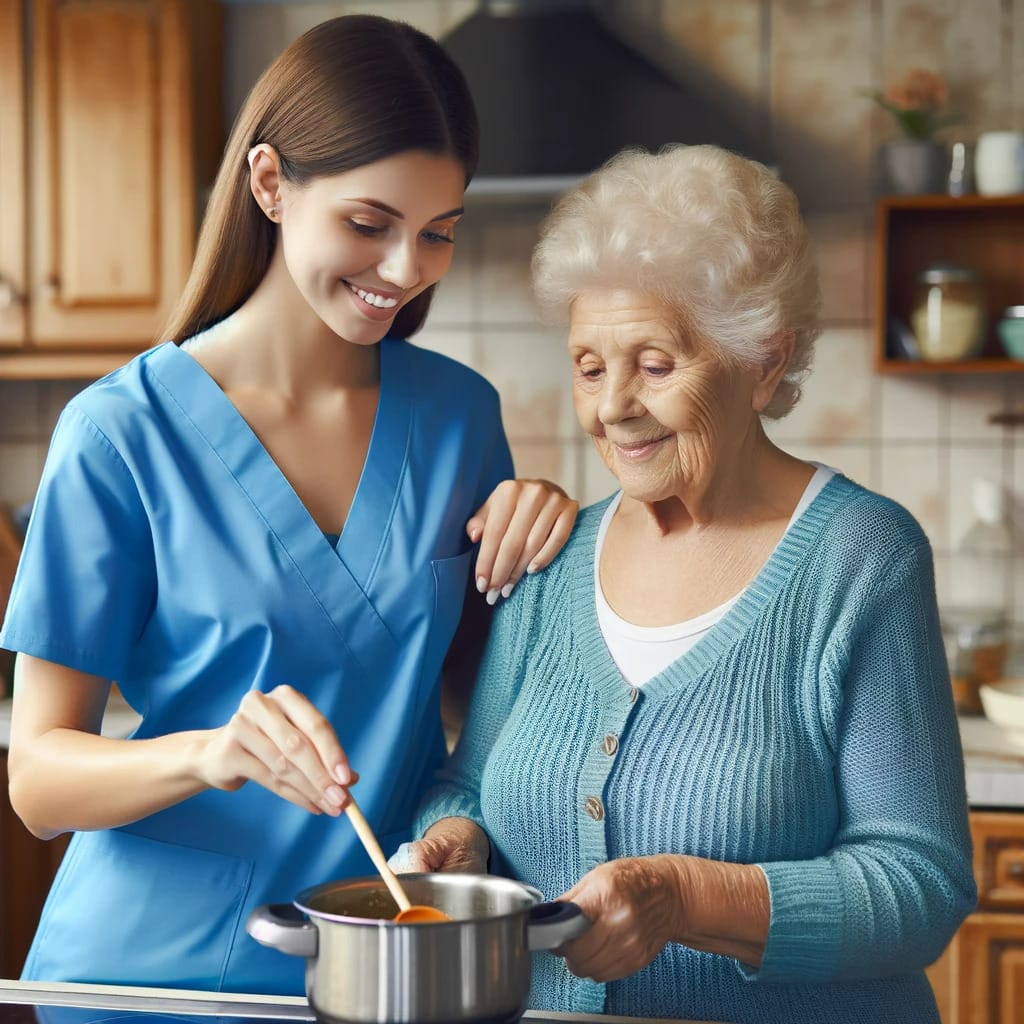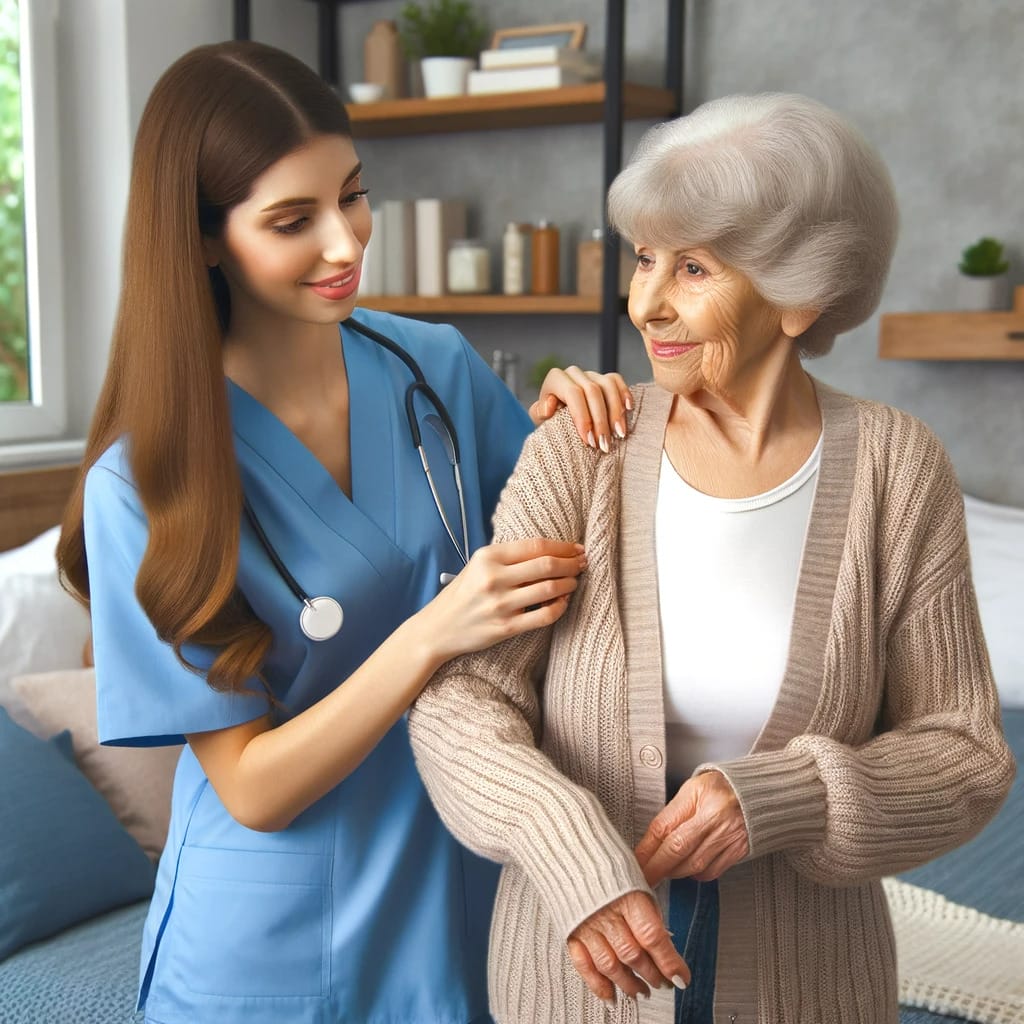Caring for older adults often revolves around understanding their needs in terms of Activities of Daily Living (ADLs) and Instrumental Activities of Daily Living (IADLs). These measures are critical in assessing a person’s ability to live independently and safely in their own home. As experts in the field, we at 2nd Family understand the importance of these assessments and the role they play in tailoring care to individual needs. Below are a few aspects of what to consider when analyzing your loved one’s level of need regarding ADLs.
What are the 6 Basic Activities of Daily Living (ADLs)
At the core of senior care are the Activities of Daily Living, a term used to describe the basic tasks that are essential for daily living. There are six basic ADLs: eating, bathing, dressing, toileting, transferring (moving from bed to chair), and continence. These basic activities are vital in assessing a person’s functional status and determining how much assistance they may require.
What are the Instrumental Activities of Daily Living (IADLs)?
Going beyond the basic ADLs, Instrumental Activities of Daily Living (IADLs) represent a set of skills that are more complex than basic ADLs, yet they are essential for an individual to live independently and engage fully in their community. These activities often include managing household chores, such as cleaning and laundry, shopping and meal preparation, managing medications, and handling finances and transportation. These tasks are typically the point where family caregivers begin to notice a decline in

physical function and cognitive impairment. Unlike basic ADLs, which focus on the individual’s self-care abilities, IADLs require a higher level of cognitive functioning and organizational skills. They are often the first set of activities to decline as individuals age, making them critical markers for identifying the need for additional support. For instance, an older adult who starts to experience difficulty in managing their medications or finds it challenging to keep up with household tasks may benefit from the assistance provided by a caregiving team, even if they can still manage their basic ADLs independently.
The Role of the Caregiving Team in ADLs
A caregiving team plays a pivotal role in assisting with both ADLs and IADLs. Their support varies depending on the individual needs of each client, ensuring that all aspects of daily living are addressed, including physical ADLs such as brushing teeth, dressing, and other personal care activities. This approach enhances the quality of life for older adults, allowing them to maintain as much independence as possible.
Activities of Daily Living Checklist
A daily living checklist is a practical tool used by caregivers to monitor and assist with various daily tasks. This checklist typically includes all basic ADLs and IADLs, allowing the caregiving team to track progress and identify areas where more support is needed.

Personal Hygiene and Self-Care
Personal hygiene is a fundamental part of the daily living checklist. It encompasses bathing, grooming, and dental care. Ensuring that these tasks are managed properly is crucial for the health and well-being of older adults.
Nutritional Needs and Meal Preparation
Proper nutrition is vital for maintaining the health of older adults. The caregiving team assists with meal preparation, ensuring that dietary needs are met. This might include planning meals, shopping for groceries, and even helping to feed oneself if necessary.
Healthcare and Medication Management
Managing medications is another critical aspect of daily living for many older adults. The caregiving team can help ensure that medications are taken correctly and on time, reducing the risk of health complications.
Mobility and Physical Assistance
For some older adults, physical assistance with basic activities such as transferring and toileting is necessary. The caregiving team is trained to provide this support in a dignified and respectful manner.
Cognitive Support and Mental Health
Maintaining mental health and cognitive abilities is just as important as physical health. Activities that stimulate the mind are an integral part of daily living for older adults. At 2nd Family, we aim to incorporate person-centered activities to support and maintain cognitive function.
The Importance of Social Interaction
Though the assistance with ADLs typically occurs in the home, it’s a necessary foundation for maintaining social interaction, which plays a significant role in the well-being of older adults. Our caregiving team can provide companionship and encourage participation in social activities, enhancing their quality of life.

Safety and Home Maintenance
Ensuring a safe living environment is essential. This involves housecleaning, home maintenance, and making any necessary modifications to prevent accidents.
Financial Management and Bill Paying
For those who require assistance, managing personal finances and paying bills are important tasks. The caregiving team can provide support or coordinate with family members to ensure these tasks are handled properly.
How a Caregiving Team Adapts to Individual Activities of Daily Living Needs
Assessing Physical and Mental Capabilities
To determine how much assistance an individual needs, an assessment of their physical and mental capabilities is essential. This involves evaluating both ADLs and IADLs to get a comprehensive understanding of their abilities and limitations.
Collaborating with Healthcare Providers
Our 2nd Family caregiving team often collaborates with healthcare providers, such as physical therapists and occupational therapists, to develop a care plan that addresses all aspects of a client’s well-being. Below are two example of how these care partner can assist in providing you with a well-rounded home care experience.
Occupational Therapists and ADLs
Occupational therapists play a crucial role in the aging process, offering services which help older adults maintain or improve their ability to perform ADLs. They work closely with our caregiving team to implement strategies that enhance independence. While we don’t provide this service directly, we do work closely with several partners and will be happy to make a recommendation.
Physical Therapists and Mobility
Physical therapists are instrumental in assisting with mobility-related ADLs. Their expertise helps older adults maintain or improve their physical abilities, contributing to their overall independence. Again, we don’t provide this service directly but we can refer you to a trusted partner.
Support with Instrumental Activities
Instrumental activities like shopping and meal preparation, managing finances, and housecleaning are areas where the caregiving team can provide significant support, helping older adults manage their homes more effectively.
The Role of Technology
In today’s world, technology plays a growing role in assisting with ADLs and IADLs. From medication reminders to telehealth services, technology enhances the caregiving team’s ability to provide efficient and effective care.
Choosing the Right Care Option
Independent Living vs. Assisted Living Facility vs. Home Care
When assessing a person’s ability to live independently, it’s crucial to consider the difference between home care, independent living and moving into an assisted living facility. The level of care required, as determined by their ADLs and IADLs, often dictates the most suitable option. We’ve created the FamilyPlanner tool to assist with that decision.
The Significance of a Team of Caregivers
At 2nd Family, our strategy is to employ a team of caregivers assigned to your loved one instead of the traditional method of “matching” a single caregiver. A caregiving team offers a broader range of skills and personalities, ensuring that the diverse needs of your loved one are met. This approach fosters a more dynamic and adaptive form of care, provides greater stability, and reduces the number of “surprise” visits from unknown caregivers due to call outs, sickness, automotive issues, etc.

Involvement of Family Members
While professional caregivers provide the bulk of support, the involvement of a family member can also be a valuable component of a comprehensive care plan.
Transitioning from Family Caregiver to Professional Care
For some families, there comes a time when the needs of their loved one surpass what a family caregiver can provide. Transitioning to a professional caregiving team can offer more comprehensive support for all ADLs and IADLs.
Local Resources and Support
Area Agencies and Support Groups in Your Town
Local area agencies and support groups can be invaluable resources for families navigating the complexities of senior care. These organizations often provide guidance and support for both caregivers and families.
Navigating Long-Term Care Options
When it comes to navigating long-term care options for older adults, understanding the specific needs that arise from their ADLs and IADLs assessments is crucial. These assessments provide a clear picture of the level of care required, whether it’s minimal assistance with daily tasks or more comprehensive support. Families and healthcare providers must consider various factors, including the older adult’s physical health, cognitive abilities, and personal preferences, to determine the most appropriate long-term care setting. This decision-making process often involves exploring various living facilities, home care services, and community resources to find the best fit.
One key consideration in this process is the potential transition from independent living to a more structured environment, like a facility. This move is often considered when the ADLs and IADLs assessments indicate a need for more consistent, professional care that can’t be adequately provided in a home setting. Assisted living facilities offer assistance with daily living activities, healthcare monitoring, and social engagement opportunities. However, for many older adults and their families, the decision to transition can be emotional and complex, necessitating thorough research and careful consideration of the older adult’s preferences and quality of life.
In addition to assisted living facilities, other long-term care options for senior living include nursing homes for those requiring more intensive medical care and specialized memory care units for individuals with dementia or Alzheimer’s disease. For some, staying at home with the support of a caregiving team is the preferred choice, especially when the home environment can be safely adapted to their needs. This option allows for personalized care and the comfort of familiar surroundings. Regardless of the chosen path, it’s essential to involve healthcare providers, such as occupational therapists and physical therapists, in the planning process. They can offer valuable insights into the specific needs of the older adult based on their ADLs and IADLs assessments, ensuring that the selected long-term care option aligns with their health requirements and personal preferences.
Financial Planning for Senior Care
Planning for the financial aspects of senior care, is an important step. This includes understanding how to manage personal finances to ensure sustainable care. Costs will vary greatly, and to some degree will be impacted based on your loved one’s ability to perform self care tasks, including ADLs and IADLs. Often, your loved one’s level of care will determine how many hours of home care, or which type of facility, is appropriate for his or her wellbeing.
Activities of Daily Living and Instrumental Activities of Daily Living are key indicators of an older adult’s ability to live independently and safely. By assessing these areas, a caregiving team can provide tailored support that enhances the quality of life for older adults. Through compassionate care and professional expertise, we strive to ensure that the unique needs of each individual are met, fostering a sense of dignity and independence.